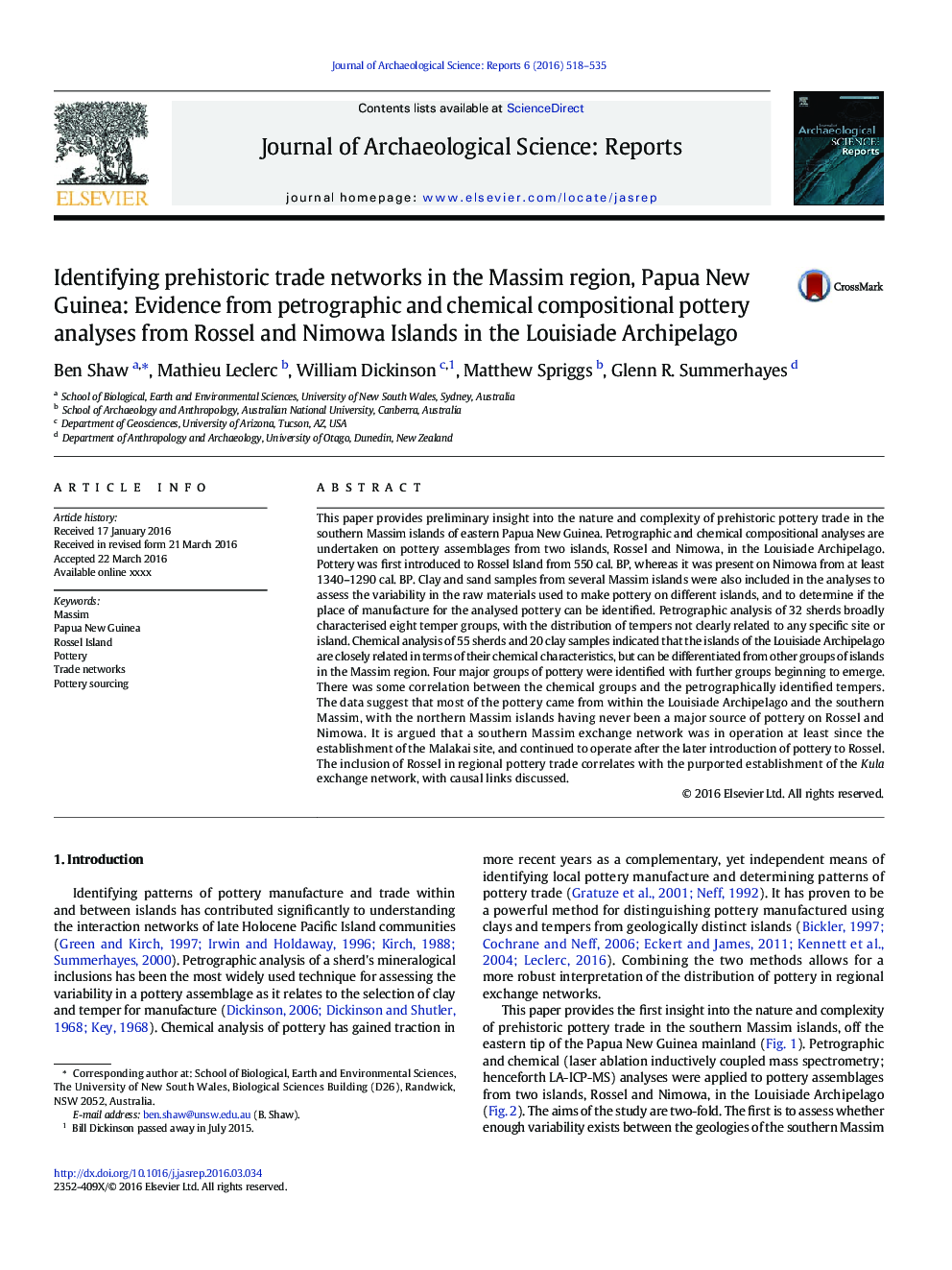| Article ID | Journal | Published Year | Pages | File Type |
|---|---|---|---|---|
| 7446560 | Journal of Archaeological Science: Reports | 2016 | 18 Pages |
Abstract
This paper provides preliminary insight into the nature and complexity of prehistoric pottery trade in the southern Massim islands of eastern Papua New Guinea. Petrographic and chemical compositional analyses are undertaken on pottery assemblages from two islands, Rossel and Nimowa, in the Louisiade Archipelago. Pottery was first introduced to Rossel Island from 550Â cal. BP, whereas it was present on Nimowa from at least 1340-1290Â cal. BP. Clay and sand samples from several Massim islands were also included in the analyses to assess the variability in the raw materials used to make pottery on different islands, and to determine if the place of manufacture for the analysed pottery can be identified. Petrographic analysis of 32 sherds broadly characterised eight temper groups, with the distribution of tempers not clearly related to any specific site or island. Chemical analysis of 55 sherds and 20 clay samples indicated that the islands of the Louisiade Archipelago are closely related in terms of their chemical characteristics, but can be differentiated from other groups of islands in the Massim region. Four major groups of pottery were identified with further groups beginning to emerge. There was some correlation between the chemical groups and the petrographically identified tempers. The data suggest that most of the pottery came from within the Louisiade Archipelago and the southern Massim, with the northern Massim islands having never been a major source of pottery on Rossel and Nimowa. It is argued that a southern Massim exchange network was in operation at least since the establishment of the Malakai site, and continued to operate after the later introduction of pottery to Rossel. The inclusion of Rossel in regional pottery trade correlates with the purported establishment of the Kula exchange network, with causal links discussed.
Related Topics
Social Sciences and Humanities
Arts and Humanities
History
Authors
Ben Shaw, Mathieu Leclerc, William Dickinson, Matthew Spriggs, Glenn R. Summerhayes,
